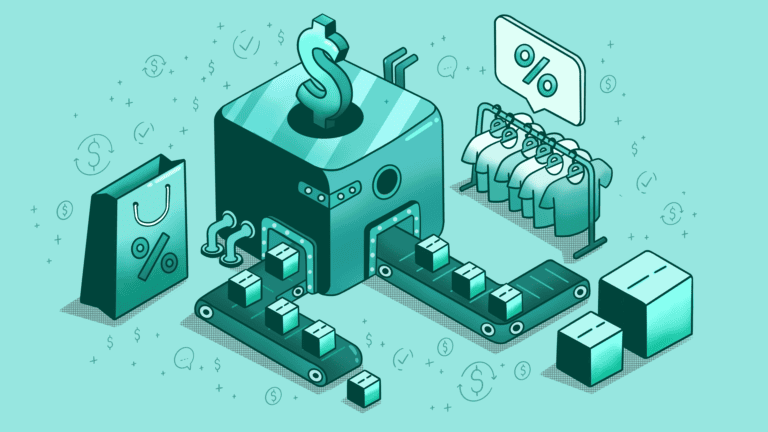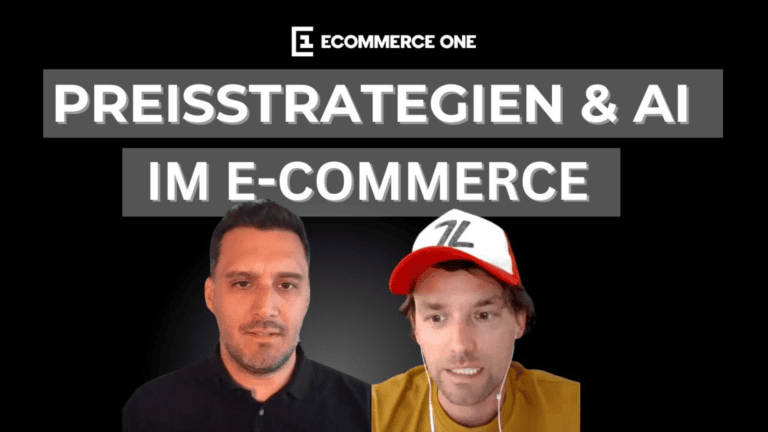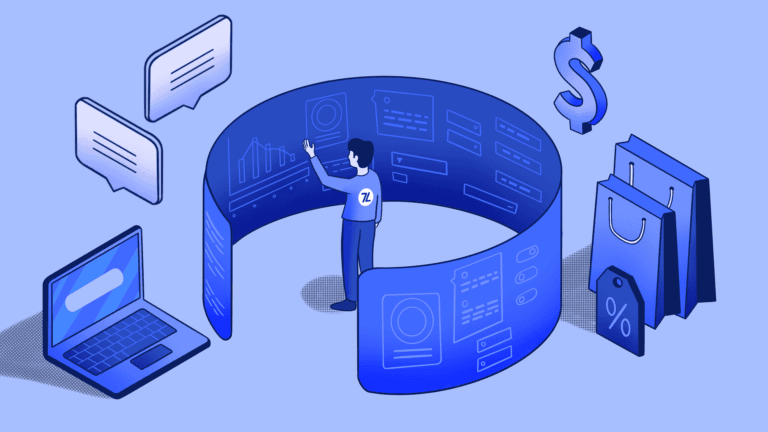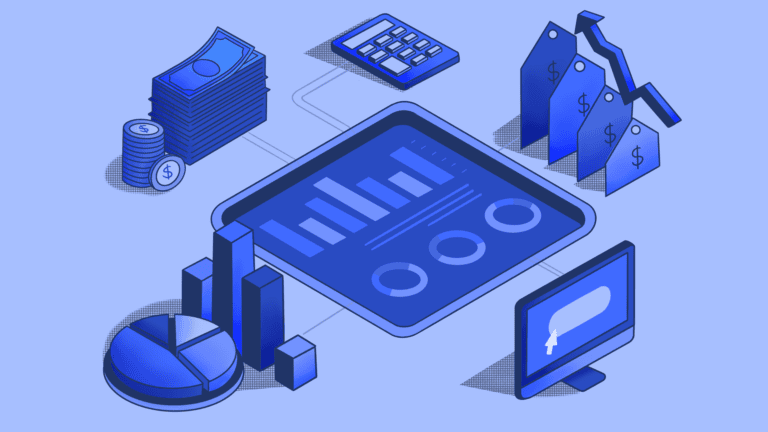What products will consumers want to purchase in the coming weeks? How do you avoid under- and overstock? As a retailer, it’s crucial to predict demand correctly to maximize profits. While forecasting tools have reduced a fair amount of uncertainty, the rise of AI-powered solutions has unlocked new levels of accuracy in forecasting – enabling retailers to skyrocket their profits with the push of a button.
Understanding demand forecasting
In an ever-growing e-commerce landscape, it’s essential for retailers to price in a competitive way. One key factor in pricing successfully is to anticipate customer behavior: Which products are no longer in demand? What are upcoming trends? How much do we need to reorder to have enough stock to deliver fast?
Demand forecasting tools support retailers in finding answers: They analyze historical data, for example on revenue and sales, but also competitor data and market reports to predict how customer behavior will change in the future – traditionally based on statistical calculations. And thus, allow predictive pricing.
With the insights from forecasting tools, retailers are better able to execute price optimization, make assortment decisions, and steer inventory levels to match market conditions. They can streamline their whole supply chain and reliably offer in-demand products at the best price.
However, with more and more data available and a growing market complexity, the accuracy of statistical models is limited. Even more so as market dynamics change quickly. Here, the use of AI algorithms can change the game.
Benefits of demand forecasting for retailers
Ultimately, effective forecasting creates a win-win scenario: It increases customer satisfaction as well as overall profits. Here are the main reasons why demand forecasting should be a priority for every retailer:
Improved supply chain resiliency
The more insights you have about the ups and downs of customer demand, the better you can plan, i.e. prepare for surges in advance. You don’t need instant fulfillment from suppliers and can handle shortages in supply better.
Optimized stock levels reduce costs
By aligning stock levels with current market demand, retailers can significantly reduce costs associated with overstocking and warehousing. Optimized stock levels prevent capital from being unnecessarily tied up in products, freeing up resources to be used elsewhere in the business to fuel growth.
Minimize instances of out-of-stock and/or excess inventory
With accurate demand forecasting, retailers will never run out of stock, which reduces the risk of lost sales, and they will never overstock, which could reduce profits if storage space needs to be freed up by selling goods at a large discount.
Increase in customer satisfaction through timely product availability
Effective forecasting ensures that retailers meet customers’ expectations: Desired products are always available at an acceptable price. Customers benefit from a better shopping experience: Satisfaction and loyalty rise, and retailers make more repeat business.
Improved market effectiveness
With clear insights into customer behavior, retailers can better plan their marketing efforts. Finding the best time to run certain ad campaigns and deciding which products to advertise in the first place – all those decisions can be made on solid data ground, without any guesswork.
Challenges in demand forecasting
The benefits of effective demand forecasting are huge, but so are the difficulties in generating reliable predictions.
In our global economy, markets change fast and often in unexpected ways: economic upheavals, new technologies, wars, and natural disasters, for example, all influence how customers behave and what they are willing to pay for certain products. Taking all these factors into consideration can be a challenge for traditional statistical modeling.
Even if markets stay stable, customer preferences are always subject to change due to social media influencers, fashion trends, and other pop-cultural factors. Who is generating what hype next is often impossible to anticipate, and retailers must identify growing trends quickly to make the most of them.
A little easier to anticipate are seasonal changes in demand. However, there is still much uncertainty about when exactly demand is going to change from summer purchase patterns to autumn purchase patterns, for example. For retailers, being in sync with their customers’ buying mood is crucial to avoid over- or understock. That’s why continuously monitoring customer behavior and analyzing patterns is so important.
Leveraging predictive analytics for demand forecasting
Demand forecasting is extremely complex: numerous factors influence demand to varying degrees. There is a constant dynamic: new factors are added, and existing factors change their importance or lose importance completely. Statistical modeling methods are not able to adequately take this complexity into account in their calculations. Unlike AI.
Artificial intelligence, specifically machine learning, excels at processing vast quantities of data, from recent sales to external market indicators. ML algorithms for demand forecasting can detect changes in a factor’s significance on a daily basis and adapt its model accordingly. This ability allows machine learning models to uncover hidden patterns, update forecasts quickly and automatically, and fine-tune predictions with a high degree of accuracy.
According to McKinsey, ML algorithms can reduce errors in demand forecasting by up to 50% and dramatically improve sales performance.
Predictive pricing in retail
AI-powered pricing is set to become the new normal in retail pricing but there will be huge differences in quality depending on which algorithms are in use. Advanced solutions like 7Learnings, for example, not only forecast demand but enable retailers to make price decisions holistically and with foresight.
What’s the unique approach here? Our AI-powered predictive pricing solution analyzes a wide range of historical and current data, including factors like return rate and inbound as well as outbound costs that are not part of the classical forecasting data set. By doing so, retailers get insights into future demand and precise recommendations on how to price to maximize profits – down to the product level. They can easily implement complex product pricing strategies as AI does the heavy lifting and makes sure that all adjustments are based on patterns in data that, although invisible to the human eye, lead reliably to the desired results.
One big advantage of AI-powered predictive pricing: It’s as dynamic as market conditions nowadays. AI algorithms monitor their data set constantly and course correct their pricing recommendations in near real-time. Thus giving retailers a significant business advantage over competitors who are steering their prices with traditional optimization techniques. That’s why predictive pricing is often called dynamic pricing. Both terms usually refer to AI-powered price optimization tools.
Want to know in more depth how AI prize optimization works?
Download our white paper “Predictive Pricing” and find out. Learn the newest tactics on how to switch to dynamic pricing, improve your business results with AI, and realize an average 10% increase in profits.
Conclusion
In today’s intensely competitive retail market, adopting AI solutions has transitioned from being merely advantageous to being absolutely essential. Implementing AI-powered demand forecasting is a crucial initial step that helps avoid inventory issues like overstocking and understocking and enhancing the customer experience.
Even more powerful is using AI in a more holistic way and implementing predictive pricing tools. There, AI algorithms go beyond forecasting demand to calculating price elasticity and determining optimal product pricing strategies to achieve business goals, such as maximizing profit, clearing inventory, or boosting sales.
As AI in retail pricing moves from being a privilege of some elite e-commerce giants to being standard practice for companies of all industries and sizes, retailers that want to bulletproof success must act quickly. Familiarizing themselves with the capabilities of predictive pricing and proactively adopting new technologies is critical to avoid economic setbacks and stay on eye level with competitors.



